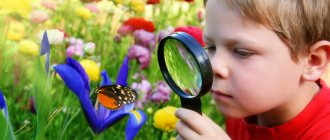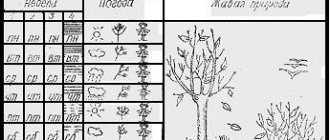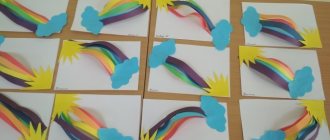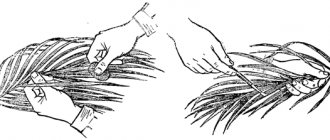Intellectual game “Connoisseurs of native nature”
"Mammals of the Kostanay region"Presenter: We are starting the third round of our game, which is dedicated to the animals of our region. Each team will have to take turns answering the question. Thinking time – 1 minute. For each correct answer, the team receives one point. If the team to which the question was asked did not give the correct answer, the team that first raised the signal card has the right to answer.
Tasks and answers of the third round “Mammals of the Kostanay region”
Boar. People have known this animal for a long time; it is mentioned in ancient myths and legends. In ancient times, it was considered one of the most valuable hunting trophies. After all, dealing with this fierce beast - the boar, as it was called for its ferocious disposition - is not an easy task. The animal is of impressive size, its length is 1.5 meters, its weight is 150–200 kilograms. Adult males have terrifying fangs, dangerous for any animal. They run quite fast and move well even through dense thickets. Their body has a streamlined shape, covered with stiff bristles that do not cling even to gnarled branches. When running away from danger, the animal is capable of reaching speeds of up to 40 km/h and running without rest for up to 10–15 km. They swim well, can move through the swamp and climb slopes. The eyesight of these animals is not very good. They learn about approaching danger thanks to their hearing and excellent sense of smell. This animal feeds on various foods of animal and plant origin. Thus, wild boars can be called omnivores. Their diet may include both earthworms and small rodents. Acorns, nuts and berries are also their food.
Roe. This is one of the most beautiful and graceful animals. A light, fleet-footed animal with a short body, slightly reminiscent of a goat. In summer they are golden-red in color, and in winter their color changes to gray. They have a blunt muzzle and a very short tail. There is light fur under the tail. Sensing danger, they lift their tail high, the white spot on which is clearly visible to those running behind. Hunters call this spot a white mirror. To escape from predators, it can run at speeds of up to 60 kilometers per hour, and jump 10 meters in length! The male's head is crowned with strong horns with small shoots. They use them in fierce fights for the female. The horns are so sharp, and the males are so powerful when enraged, that duels sometimes end with one of the duelists being wounded. Food for animals is the buds, leaves and shoots of deciduous trees, as well as herbaceous plants and pine needles. Often eats berries, acorns, lichens, and mushrooms. In winter, they feed on stems of dried grass, young branches of trees and various shrubs. Babies born in the spring are weak and helpless, lying hidden in the grass. But after a week they begin to follow their mother everywhere and happily chew juicy greens.
Squirrel. What kind of animal is this, whose character is arrogant beyond its stature? - it knows how to win a place for itself: without hesitation, it will take a magpie’s nest, which is stronger and larger, and let its owners go around the world? The animal usually has several different nests - for sleeping, for offspring or shelter from bad weather: up to five pieces. And this is not a luxury - by organizing frequent “housewarming” parties, the animal is saved from parasites. There is a sign: if this animal makes a large reserve for the winter, wait for a cold winter.
Elk. Real forest giants live in our forests. In the entire appearance of the forest giant one can feel power and strength. Its weight reaches 300–400 kg or more, its height is about two meters. He has a large, hook-nosed head. The upper thick lip is longer than the lower one. The body is massive, with a hump-like nape. Long ears sensitively pick up the slightest sound. Warm thick wool protects the animal from frost. The legs are long, with wide hooves. They allow you to walk through deep snow and swamps. They also run and swim fast. If he comes across a river, he can easily swim across it and may even dive under the water for a minute. There is also a decoration - large wide horns. And so that they do not interfere with running through the forest thickets, the animal raises its head, as if putting its horns on its back. But sometimes the horns get boring. And he sheds them in November-December and walks without them until May. It feeds on herbs, shoots of trees, shrubs, berries, and mushrooms.







